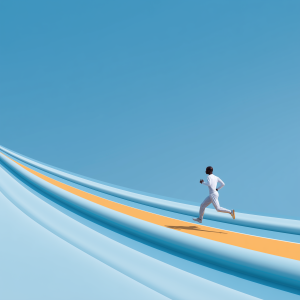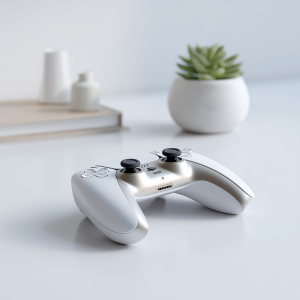Alright folks, let’s talk about something that seems almost old-school these days: single-tasking. Remember when we used to just do one thing at a time? Turns out, there’s some real magic there. In a world where multitasking is king, single-tasking is like that hidden gem we forgot about. It’s about focusing on one task, giving it your full attention, and getting it done right. No more juggling a million things at once and feeling like you’re not really doing any of them well. Let’s dive into how this simple shift can actually boost your focus and make you more efficient.
Key Takeaways
- Single-tasking boosts productivity by reducing the time lost in switching between tasks.
- Focusing on one task at a time improves the quality of work and reduces errors.
- Single-tasking can lower stress levels by creating a more manageable workload.
- Transitioning to a single-tasking workflow involves identifying distraction triggers and scheduling focused time slots.
- Maintaining a single-tasking mindset requires continuous self-monitoring and adjustments.
How Does Single-Tasking Outperform Multitasking?
What Are the Cognitive Benefits?
Single-tasking is like giving your brain a vacation. When you focus on one task at a time, your mind can dive deep, allowing you to process information more thoroughly and creatively. Switching between tasks, on the other hand, is a bit like trying to watch two movies at once—you end up missing the plot of both. Studies show that multitasking can reduce productivity by up to 40% and increase errors. By sticking to one task, you not only get more done, but you do it better.
Here’s a quick breakdown of how single-tasking benefits your brain:
- Improved Focus: When you’re not jumping from task to task, your concentration deepens, making complex tasks easier to handle.
- Reduced Mental Fatigue: Less switching means less mental strain, leaving you feeling more refreshed.
- Enhanced Creativity: With all your cognitive resources on one task, you’re more likely to come up with innovative solutions.
“In a world where multitasking is often seen as a badge of honor, single-tasking is the underdog that quietly wins the race.”
By embracing single-tasking, you reduce the chaos and increase the quality of your work. It’s a simple shift that can make a massive difference in how you approach your day. For more insights on how to work smarter, not harder, check out some strategies to enhance work efficiency.
How Can You Transition to a Single-Task Workflow Step by Step?

Transitioning from the chaos of multitasking to the clarity of single-tasking can seem daunting, but it’s definitely doable with the right approach. Start small and be patient with yourself. Here’s how you can make the switch smoothly:
Identifying Distraction Triggers
- Take Note of Interruptions: Keep a simple log of what distracts you during your workday. Is it your phone buzzing every few minutes? Or maybe it’s those random thoughts that pop up out of nowhere.
- Analyze and Prioritize: Once you’ve identified your main distractions, rank them. Which ones are the biggest productivity killers?
- Implement Solutions: For each distraction, come up with a countermeasure. For instance, if social media is a culprit, consider using apps that block access during work hours.
Scheduling Focused Time Slots
- Set Clear Boundaries: Dedicate specific blocks of time for focused work. Let your colleagues know when you’re unavailable to minimize interruptions.
- Use Time-Blocking Techniques: Consider methods like the Pomodoro Technique where you work in focused bursts with short breaks in between.
- Regularly Review and Adjust: At the end of each week, review your schedule. Did the time slots work? What needs tweaking?
Transitioning to single-tasking is like switching lanes on a busy highway. It takes a bit of getting used to, but once you find your groove, the drive becomes smoother and more enjoyable.
Remember, moving to a single-task workflow isn’t about cutting out multitasking cold turkey. It’s a gradual shift that involves configuring task rules to better manage your workflow. By taking it step by step, you’ll find that your focus improves, and tasks get done more efficiently.
How Do You Sustain a Single-Tasking Mindset?

Continuous Self-Monitoring and Adjustments
Sticking to a single-tasking mindset can be tough, especially when the world around you seems to demand multitasking. But with a few focus enhancement techniques, you can make it work. The key is consistency and adaptability.
- Routine and Structure: Develop a daily routine that includes specific periods for single-tasking. Having a consistent schedule helps cement the habit. Try setting aside a couple of hours in the morning when your mind is fresh to tackle tasks without interruptions.
- Accountability Partners: Share your goals with someone who can keep you on track. Whether it’s a coworker or a friend, having someone to check in with can boost your commitment.
- Self-Reflection: Regularly take time to reflect on your progress. What techniques are working? What needs tweaking? Keeping a journal can be a handy tool for this.
Embracing single-tasking isn’t just about doing one thing at a time; it’s about doing it well. It’s about giving yourself the space to focus without constantly switching gears.
To stay on course, remember to eliminate distractions by creating a focused work environment. This means closing unnecessary browser tabs, silencing notifications, and putting away your phone.
By integrating these practices, you not only enhance your productivity but also reduce stress and improve overall work quality. It’s a shift that requires patience and persistence, but the benefits are well worth the effort.
Pros and Cons of Single-Tasking
Benefits in Reduced Cognitive Load
Single-tasking is like a breath of fresh air for your brain. Focusing on one task at a time significantly reduces cognitive load, allowing your mind to process information more effectively. When you’re not constantly switching gears, you lower the risk of mental fatigue. Think of it like driving a car on a clear road versus a busy highway. The fewer distractions, the smoother the journey. Here are some key benefits:
- Enhanced Productivity: By eliminating the back-and-forth of multitasking, you save time and energy, leading to more efficient work.
- Improved Quality: With full attention on one task, you’re less likely to make mistakes, resulting in higher quality outcomes.
- Reduced Stress: A clear focus reduces chaos and overwhelm, promoting a calmer work environment.
Challenges in Environments Demanding Multitasking
While single-tasking has its perks, it’s not always easy to stick to, especially in fast-paced settings. Here’s why it can be tricky:
- Dynamic Workplaces: In environments where priorities shift rapidly, sticking to one task can be challenging.
- Cultural Expectations: Many workplaces still value the hustle of multitasking, making it hard to break away from the norm.
- Initial Resistance: Shifting from a multitasking mindset to single-tasking requires effort and can feel counterintuitive at first.
In a world that often glorifies doing it all, embracing single-tasking might seem like swimming against the current. But with practice, it can lead to a more focused and fulfilling work life.
For a detailed guide to single-tasking, consider how it enhances cognitive performance and reduces mental fatigue.
Conclusion
Alright, let’s wrap this up. Embracing single-tasking might seem like a throwback in our multitasking world, but it’s a game-changer. By focusing on one thing at a time, you not only get more done but also do it better. It’s like finally realizing that trying to juggle a dozen things at once isn’t as cool as it sounds. Sure, it takes a bit of practice to get used to, but once you do, the benefits are hard to ignore. Less stress, more creativity, and a sense of accomplishment that actually sticks. So, give it a shot. Start small, maybe with just one task a day, and see how it feels. You might just find that single-tasking is the secret to a more productive and peaceful life. Cheers to focusing on what truly matters!
Frequently Asked Questions
What is single-tasking?
Single-tasking means focusing on one task at a time, instead of trying to do many things at once.
How does single-tasking help improve focus?
By concentrating on one task, your brain can work better and faster without getting distracted.
What are the benefits of single-tasking over multitasking?
Single-tasking can lead to better work quality, less stress, and more creativity.
How can I start single-tasking?
Begin by setting clear tasks for yourself and giving each one your full attention until it’s done.
Why is multitasking not as effective?
Multitasking can make you more prone to mistakes and slow you down because your brain is switching between tasks.
What tools can help with single-tasking?
Tools like timers or apps that block distractions can help you focus on one task at a time.
Can single-tasking be applied to schoolwork?
Yes, focusing on one subject or assignment at a time can help you learn better and faster.
How do breaks fit into single-tasking?
Taking short breaks can refresh your mind, helping you stay focused when you return to your task.








